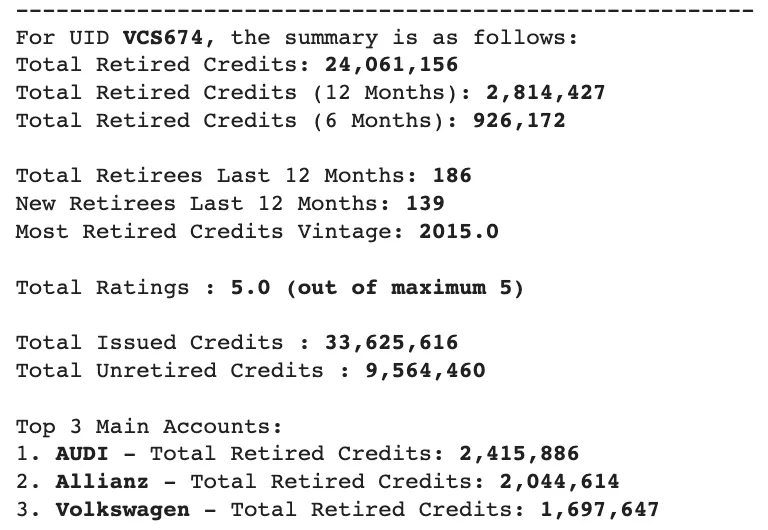In the realm of project evaluation and decision-making, it is crucial to comprehensively analyze project details and explore potential alternatives. This process involves not only summarizing project-specific data but also assessing the similarity between projects to uncover valuable insights.
This article delves into the intricacies of project evaluation and similarity analysis, shedding light on how various attributes play a vital role in determining project similarity. We’ll explore the attributes considered, their assigned weights, and the step-by-step process for calculating similarities.
Let’s dive into a detailed explanation of the integrated process that includes both obtaining project details and calculating similarities between projects. We’ll break it down step by step:
Step 1: Gather Unique IDs (UIDs)
We begin by creating a list of unique IDs (UIDs), which are like project identifiers. Each UID represents a specific project in our dataset. These UIDs are crucial for referencing and retrieving detailed information about each project.
Step 2: Calculate Similarities with Other Projects
Assigning Weights to Attributes:
In the process of finding similar projects, we assign weights to different attributes to determine their relative importance in calculating the similarity between projects. These weights guide the calculation of a similarity score, which quantifies how closely two projects align in terms of these attributes.
Attributes and Weights Used for Similarity Calculation:
- Continent(0.8) and Country(Weight: 0.7): Projects in similar geographic regions may have similarities due to local factors.
- Registry (Weight: 1.5): The registry where a project is listed can indicate similarities in terms of regulations and industry.
- Sectors(Weight: 1.0) and Subsectors (Weight: 1.5): Projects categorized in similar sectors and subsectors might share similar objectives or characteristics with heavier weightage to the project sub sector.
- Methodologies (Weight: 1.0): Similar methodologies used in projects may suggest common practices or goals.
- Region (Weight: 0.5): Within the same country, the geographic region of a project can influence its attributes and performance.
- Project Acreage (Weight: 0.5): The size of the project in terms of acreage can be a factor in similarity.
- Size (Weight: 1.0): The overall size or scale (Micro, Small, Large) of a project is considered for similarity.
- Project Activity Level (Weight: 1.5): This attribute reflects how active or engaged a project is. Further details on how this attribute is derived can be found here: VCM Liquidity Index.
Certain refinements have been introduced to enhance the robustness of the Project Activity Level. When assessing the activity levels of two projects, a distinctive approach is employed. If the difference between their activity levels is precisely +1 or -1, a weighted aggregation mechanism comes into play. In the case of a +1 difference, the weight is increased by 0.2, elevating it to 1.7 from its original 1.5. Conversely, when the difference is -1, the weight undergoes a reduction of 0.2, resulting in a weightage of 1.3 instead of the previous 1.5. This adjustment is made to ensure that projects with activity levels closely resembling the compared project don’t lose significance, acknowledging their similarity in nature..
With these weights in place, the code then calculates a similarity score for each pair of projects. The similarity score is derived by comparing the attributes of the current project in our UID list with the attributes of each project in the dataset. The score is calculated as the sum of the product of attribute values and their corresponding weights.
Filtering the Top Similar Projects:
After inputting a unique identifier (UID), it undergoes a comprehensive scan across all projects within the database. Whenever it identifies a match in terms of attributes, a corresponding weight is assigned. These weights are subsequently aggregated, effectively generating a similarity score. Following this computation, there is a validation step in place: if the similarity score surpasses or equals 6, we deem the project as similar. At this point, we present only the top 5 projects, ordered in descending order of their similarity scores.
Example:
The system selects a uid in this case “Rimba Raya” with uid “VCS674”, and a project for comparison, for example, “Katingan Peatland Restoration and Conservation Project” with the identifier “VCS1477,” and proceeds to evaluate the extent of attribute similarity.
In this particular instance, the attributes identified as similar, along with their respective weights, are as follows:
_____________
Continent: 0.8
Country: 0.7
Sector: 1.5
Registry: 1
Size: 1
Activity: 1.5
Region: 0.5
_____________
The cumulative similarity score, derived from these weighted attributes, yields a total score of 7.0.
Subsequently, a condition is applied to assess if the similarity score meets or exceeds the threshold of 6.0. In this case, the condition is satisfied, leading to the conclusion that “VCS1477” is indeed similar to “VCS674.”
Step 3: Presenting the Results
For each UID in our list, we provide a comprehensive report encompassing:
- Project details, including: Total Issued Credits, Total Retired Credits, Total Retired Credits (Last 12 Months), New Retirees (Last 12 Months), Total Distinct Retirees, Top 3 buyers, and more.

- A list of similar projects, complete with their names, similarity scores, and the weights assigned to each contributing attribute.

This detailed report empowers brokers with a holistic view of projects, facilitating informed decision-making and the exploration of potential opportunities within the dataset.
Step 4: Sending Information to Brokers
The final output of this integrated process is a detailed report for each UID in our list. This report includes both project-specific details and information about similar projects, complete with attribute weights. Brokers can leverage this comprehensive report to make informed decisions and take actions related to these projects, harnessing the weighted similarities to assess potential connections and opportunities within the dataset.
In essence, this structured approach to project evaluation and similarity analysis empowers decision-makers to navigate project landscapes with greater clarity and insight.
For more information, please reach out to hello@alliedoffsets.com.
